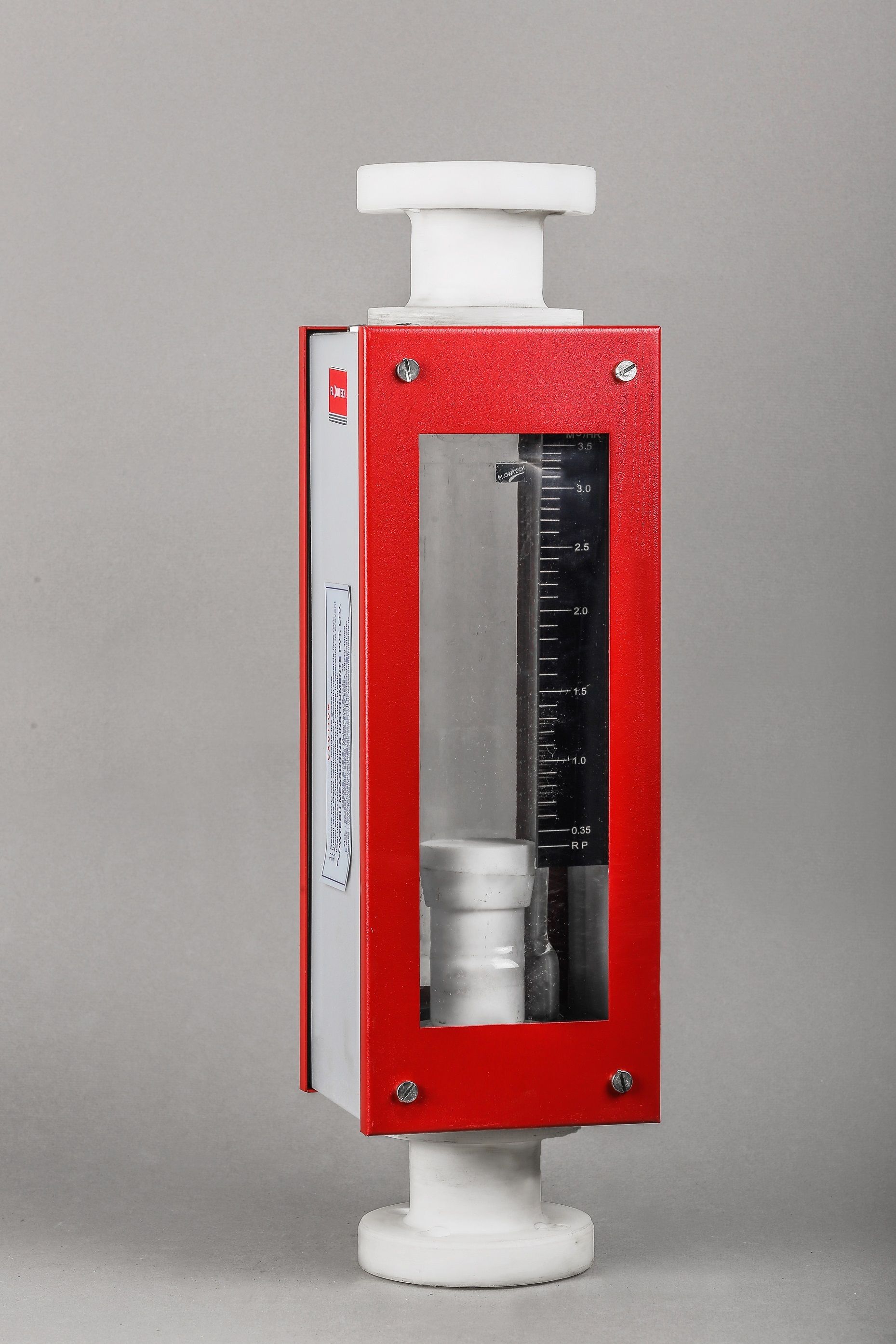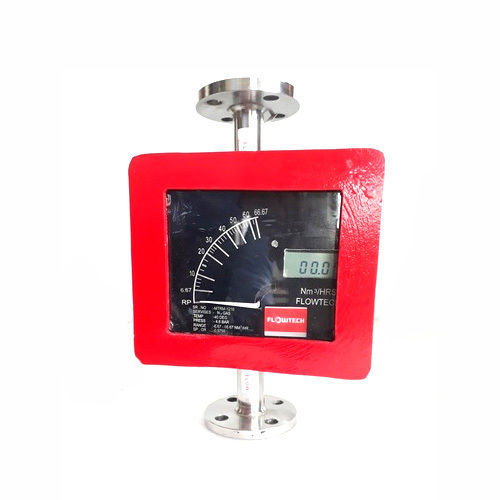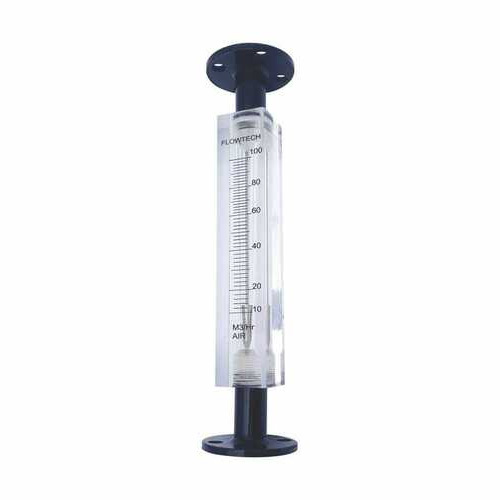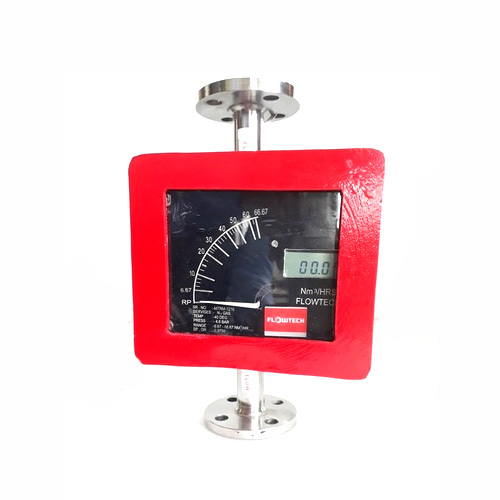Glass Tube Rotameters
Price 4950 INR/ Piece
MOQ : 1 Piece
Glass Tube Rotameters Specification
- Connectivity Type
- Flanged / Threaded / Hose Connections
- Flow Rate
- 10 to 15,000 LPH (Liquid) / 0.1 to 75 Nm/hr (Gas)
- Temperature Range
- Up to 120C (standard), higher versions on request Celsius (oC)
- Pressure Range
- Up to 10 kg/cm
- Humidity %
- Not Affected
- Equipment Type
- Variable Area Flow Meter
- Measurement Range
- As per application and tube size
- Sensor Type
- Float-based (metal or PTFE), Mechanical Sensing
- Resolution
- According to scale graduation, typically high for low ranges
- Material
- Borosilicate Glass Tube, End Connections in SS / PVC / PP / PTFE
- Power Supply
- Not Required (Manual Operation)
- Accuracy
- 2% of Full Scale %
- Display Type
- Direct Reading Graduated Scale
- Range
- 10 to 15,000 LPH (Liquid) / 0.1 to 75 Nm/hr (Gas) [customizable]
Glass Tube Rotameters Trade Information
- Minimum Order Quantity
- 1 Piece
- Payment Terms
- Paypal, Cash Against Delivery (CAD), Cash on Delivery (COD), Cash in Advance (CID), Cheque, Letter of Credit at Sight (Sight L/C), Telegraphic Transfer (T/T), Letter of Credit (L/C)
- Supply Ability
- 500 Pieces Per Month
- Delivery Time
- 1 Week
- Sample Available
- Yes
- Sample Policy
- Contact us for information regarding our sample policy
- Packaging Details
- Wooden Cages
- Main Domestic Market
- All India, Tripura, West India, Andaman and Nicobar Islands, Gujarat, Mizoram, Chandigarh, Himachal Pradesh, Punjab, Manipur, Meghalaya, Madhya Pradesh, Arunachal Pradesh, Karnataka, Goa, South India, Jammu and Kashmir, Dadra and Nagar Haveli, Nagaland, Rajasthan, Jharkhand, North India, Daman and Diu, Central India, Pondicherry, Haryana, Kerala, Telangana, Uttar Pradesh, Andhra Pradesh, Bihar, Uttarakhand, Maharashtra, Chhattisgarh, Delhi, Odisha, Sikkim, Lakshadweep, East India, Tamil Nadu, West Bengal, Assam
About Glass Tube Rotameters
Glass Tube Rotameters are intended for general in line and By-Pass metering applications (i.e. for Gas & Liquid. where operating conditions are with the limitations of Glass metering tubes. These are the principle of Variable Area. The float moves freely up and down tapered borosilicate glass with fluid flow from bottom to top. The float takes up a position where buoyancy forces and the float weight are balanced in proportion to flow rate. The Vertical position of the float as indicated by scale is the measure of the instantaneous flow rate.
Glass Tube Rotameter Specifications:
- Accuracy :+/- 2% F.S.D.
- Temperature Ratings : Maximum Operating Temperature rating is 121 degree centigrade for Gas services and 93 degree centigrade for Liquid services.
- Repeatability :0.5 %
- Connections :Flanged Or Screwed Or Triclover Joint OR Hose Nipple.
- Rangebility: 10:1
- Enclosure :IP 55 OR IP 65 on request.
- Scale length : 180-200 mm.
Materials Of Constructions:
- Tube : Borosilicate Glass
- Float : SS316, PTFE, Aluminium and P.P.
- Pickings : Neoprene, PTFE, Silicon, Viton
- Frame and Cover : M.S.OR SS
- End Fitting :M.S.,C.S., SS304, SS316, CF-8M, CF8, C.I. PTFE Lined, SS PTFE Lined, PVC, others on request.
- Frame and Cover : M.S.OR SS
Frequently Asked Questions aboutGlass Tube Rotameters:
1. What are rotameter's biggest drawbacks?
Ans: It is difficult to handle the glass tube type. Vertical mounting is required. It is not suitable for pulsating services. Generally, it only applies to modest pipe services.
2. How does a glass tube rotameter work?
Ans: A Rotameter is a type of variable area flow metre that operates in a straightforward manner by passing a liquid or gas through a tapered tube. This gas must first elevate a float that is held inside the tube in order for it to travel through it.
3. What kind of tube material is for rotameter?
Ans: A rotameter consists of a tapered tube, usually made of glass, with a "float" within that is pushed up by the drag force of the flow and dragged down by gravity. The "float" might be made of anodized aluminium or ceramic.
4. What is the application of glass tube rotameter?
Ans: Rotameters, sometimes referred to as variable area flow metres, are devices that measure the volumetric flow rates of gases or liquids as they move through the tapering tube of the rotameter.
5. What is a rotameter also called?
Ans: It is also called variable area flow meter
6. Is rotameter used to measure pressure?
Ans: A Rotameter is a tool used to gauge fluid flow rates. With its metal float and glass tube, it is a well-known instrument used to gauge a fluid's volumetric pressure.
Versatile Mounting and Connection Options
Glass Tube Rotameters can be installed vertically as standard or horizontally with a special design. They come with diverse end connections including BSP/NPT threads and can be supplied with flanged or hose fittings. This versatility makes them suitable for varied system requirements in both retrofit and new installations across different industries.
Precision Flow Measurement and Usability
These rotameters feature a variable area operating principle, providing direct visual flow indication via the marked graduated scale. The high-clarity borosilicate tube and optional shields offer both safety and durability. Users benefit from optional flow regulation via an integral needle valve delivering precise flow control, ideal for laboratory and process applications.
Minimal Maintenance and Maximum Efficiency
Glass Tube Rotameters are designed for straightforward maintenance, featuring easy disassembly and minimal parts. With mechanical float-based sensing, they require no external power, leading to zero power consumption, and can be cleaned or serviced readily. This assures long-term, reliable operation even with continuous use and in challenging environments.
FAQs of Glass Tube Rotameters:
Q: How does a Glass Tube Rotameter measure flow?
A: A Glass Tube Rotameter operates on the variable area principle, where the float rises in the tapered glass tube as the fluid flows. The floats position, viewed against the direct reading graduated scale, indicates the flow rate of liquid or gas passing through the meter.Q: What are the primary applications for Glass Tube Rotameters?
A: These rotameters are widely used in chemical processing, water treatment, pharmaceutical production, laboratories, and OEM equipment where precise measurement of clean liquids and gases is essential for process control and safety.Q: When should I choose a vertical versus a horizontal mounting configuration?
A: Vertical mounting is the standard and most commonly recommended configuration for optimal accuracy. Horizontal mounting can be selected with special design modifications when installation space or system layout necessitates a non-vertical orientation.Q: Where can these rotameters be installed within a system?
A: Glass Tube Rotameters are suitable for indoor and sheltered installations across chemical plants, water treatment facilities, research laboratories, and production lines, wherever real-time flow monitoring of clean media is needed.Q: What is the process for cleaning and maintaining the rotameter?
A: The rotameter is designed for minimal maintenance. To clean, simply disassemble the unit following the manufacturers instructions, rinse with a suitable cleaning solution, and reassemble. No special tools or power supply are needed, keeping maintenance efficient and straightforward.Q: How do customized options benefit specific applications?
A: Custom options, such as tailored scales, special tube lengths, different float materials, and protective shields, allow the rotameter to match specific flow, chemical compatibility, and safety requirements for various industries and unique operational environments.Q: What are the benefits of using a Glass Tube Rotameter over electronic flow meters?
A: Glass Tube Rotameters offer the advantage of direct visual indication, do not require any external power source, are highly reliable under a range of temperatures and pressures, and are straightforward to operate and maintain, leading to cost-effective, consistent flow monitoring.



Tell us about your requirement

Price:
Quantity
Select Unit
- 50
- 100
- 200
- 250
- 500
- 1000+
Additional detail
Mobile number
Email
More Products in Rotameters Category
Metal Tube Rotameters
Price 8100 INR / Piece
Minimum Order Quantity : 1 Piece
Material : 304/316 Stainless Steel, Other Alloys on Request
Usage : Industrial
Size : Standard
Accuracy : 2% of Full Scale
Glass Tube Rota Meters
Price 4000 INR / Piece
Minimum Order Quantity : 1 Piece
Material : Borosilicate Glass Tube with Metal Fittings
Usage : Industrial
Size : Different Sizes Available
Accuracy : 2% of Full Scale
Acrylic Body RotaMeter
Price 1260 INR / Piece
Minimum Order Quantity : 1 Piece
Material : High Quality Acrylic
Accuracy : 2% of Full Scale
Metal Tube Digital Rotameter
Price 16000 INR / Piece
Minimum Order Quantity : 1 Piece
Material : Metal
Usage : Industrial
Size : Different Sizes Available
 |
FLOWTECH MEASURING INSTRUMENTS PVT. LTD.
All Rights Reserved.(Terms of Use) Developed and Managed by Infocom Network Private Limited. |

 English
English Spanish
Spanish French
French German
German Italian
Italian Chinese (Simplified)
Chinese (Simplified) Japanese
Japanese Korean
Korean Arabic
Arabic Portuguese
Portuguese

 Send Inquiry
Send Inquiry




